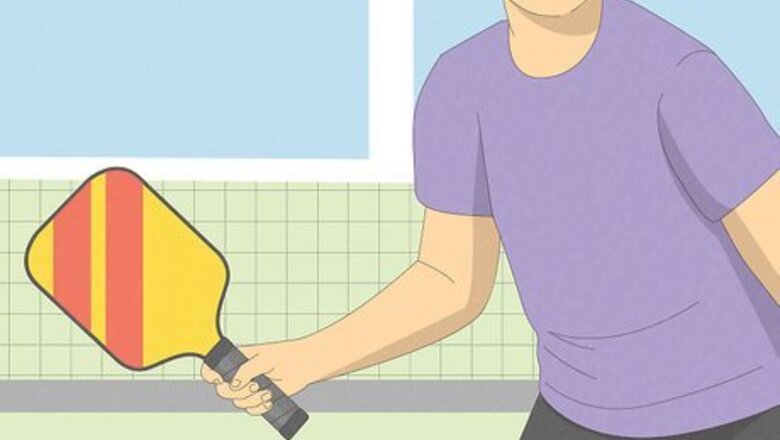
views
- Pick your pickleball paddle based on elements such as weight, material, and shape and how they affect the paddle's performance.
- Use the elements and structure of the paddle to balance your own strengths and weaknesses as a player.
- As a beginner, choose a paddle with a low price point so you can upgrade once your skills improve and you start to develop your own playing style.
How do you pick the best paddle?
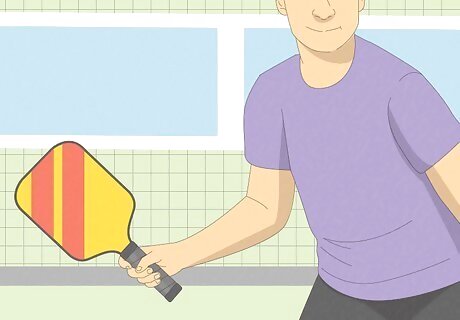
Balance the paddle's elements with your skill level and playing style. The parts and features of a pickleball paddle are designed to work together to enhance a specific style of play. Choosing a paddle is all about balancing the paddle's strengths and weaknesses with your own strengths and weaknesses. For example, if you produce a lot of power on your own, you might choose a paddle that enhances that power, or you might choose something that balances that power by giving you more finesse. As a beginner, look for a paddle that's easy to maneuver and has a forgiving sweet spot. Err in favor of a lower price point—you can always upgrade when your skills improve. As your game progresses, your paddle needs will likely change. Try a lot of different paddles and focus on features that support your style of play.
Paddle Parts and Features
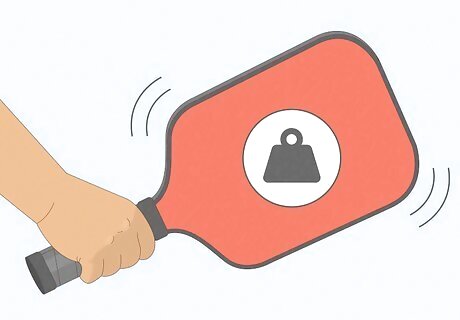
Weight Pickleball paddles tend to be between 7 and 10 ounces. Generally, the heavier the paddle, the more power you'll have. If your game favors quick reactions and touch at the net, go for a lighter paddle. Do you live for power smashes? You definitely want a heavier paddle. As a rule of thumb, 7 to 8 ounces is considered lightweight. Midweight paddles, which are usually best for beginners, are between 8 and 9 ounces. Anything over 9 ounces is considered a heavyweight paddle. Manufacturers often offer the same paddle in different weights, so if you find one you like that's a little too heavy, ask if it comes any lighter. If you've played tennis in the past, you might prefer a heavier paddle, since it will feel similar to a tennis racket in your hand.
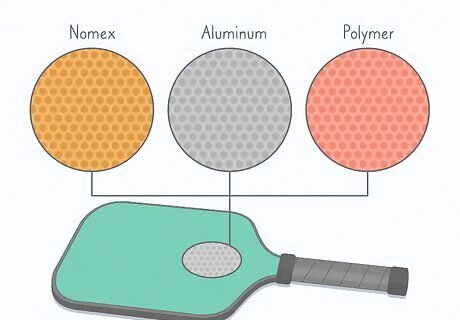
Core material The core of a pickleball paddle can be made of different materials. Leaving aside the basic wooden paddles, a polymer core is typically going to be your best bet—especially if you're a beginner. Here are your options: Nomex: Aside from wood, the oldest pickleball paddles are Nomex. These paddles are all about power but don't have a lot of control, especially with quick shots. Aluminum: These paddles are lightweight and pretty loud. As is common with lightweight paddles, they're all about control and finesse and don't have a lot of power. Polymer: Polymer paddles are basically plastic, but they give you the best of both options with a balance of power and control. A good all-around paddle, especially for beginners.
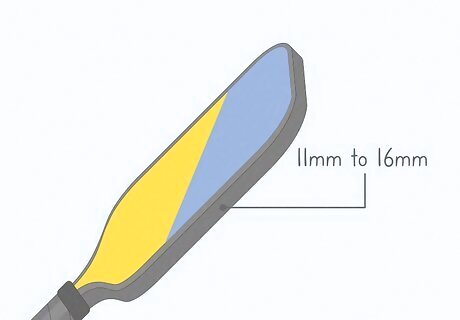
Thickness The thickness of a paddle dictates how much of the ball's energy it absorbs on impact. Thinner paddles give you more power because they absorb less of the ball's energy. Thicker paddles give you more control. Paddles range in thickness from 11mm to 16mm, although some manufacturers only make paddles in a single thickness. As a beginner, try to choose a paddle in the middle of the thickness range for a nice balance of power and control.
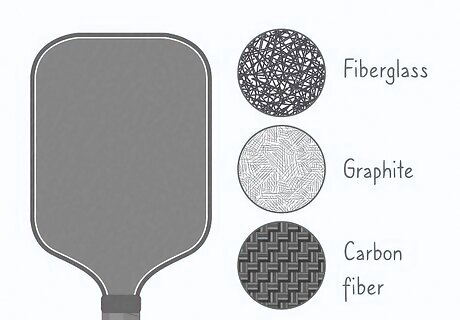
Surface material The material you can see on the surface of the paddle is also referred to as the "facing." There are 3 basic types and which one you choose depends on your style of play and what's most important to you in a paddle. Here are your options: Fiberglass: Gives you the most power of any facing, but that power comes at the expense of control. It's less forgiving of errors with a tighter sweet spot. Graphite: Gives you less power than composite or fiberglass facings, but balances that with more control. Companies often use "graphite" and "carbon fiber" interchangeably in their marketing literature, so it can be tough to figure out what you're actually getting. Carbon fiber: This facing gives you the most control of all (and the least power). It's also more durable (and more expensive) than either composite or graphite. Composite: A composite facing is simply a combination of different materials. While composite facings might be the most common, most manufacturers will say the majority material is the facing, rather than stating that it's a composite.
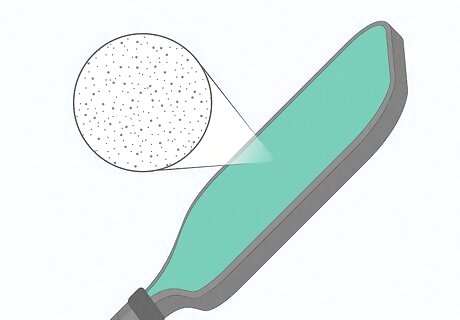
Grit The grit, or roughness, of the face of your paddle is what allows you to put spin on the ball. A smoother surface equates to less spin. There are basically 2 ways manufacturers can make the face gritty—they can either paint it on or use raw carbon fiber in the facing. Faces with grit painted on are typically the most common. They're also the worst because they tend to wear off pretty quickly. They also wear off unevenly, which causes a loss of control. Faces with raw carbon fiber are the best and most consistent. Unlike painted-on grit, they don't wear down very quickly. If you play regularly, they're worth the investment.
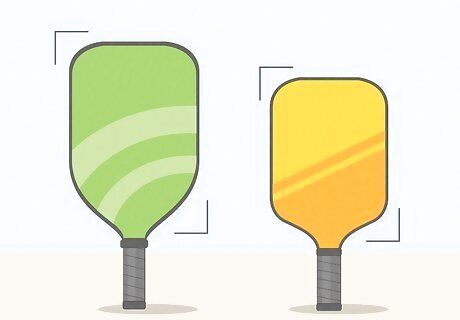
Paddle shape There's not a huge difference in paddle shape, but what difference there is can really affect your game. Wide-body styles are generally easier for beginners because they're more forgiving and have a larger sweet spot. A lot of pros prefer wide-body styles as well. For example, if you're shorter, you might want an elongated paddle that will give you a little more reach. Some paddles also come with edge guards, which just protect your paddle if you happen to drop it. The trade-off is that you lose a little surface area.
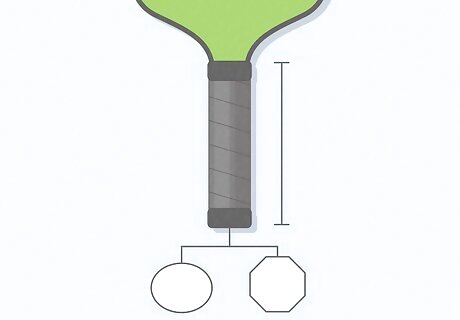
Handle length and shape Your racket-sport background is the biggest determining factor here. If you're accustomed to table tennis and hold the racket like you're shaking someone's hand, go for a shorter handle. If you're coming from tennis, on the other hand, you'll probably want a longer handle. Some handles also have an octagon shape that's similar to a tennis racket handle. If you've played a lot of tennis, you'll appreciate how familiar it feels. If you don't have a lot of power and you're using a two-handed backhand, go for a longer handle so you have room for both hands.
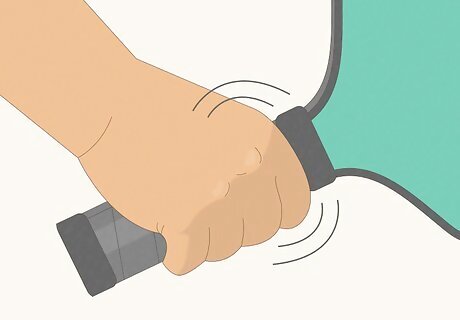
Grip size If you can't grip your paddle comfortably, you aren't going to be able to play at your best. If the grip is too big, the paddle will twist when you hit the ball. If it's too small, your hand and wrist can get fatigued. Use the height test to get started finding the right size grip for you (grips are measured in inches as an industry standard): Under 5'2" (157.5 cm): 4-inch grip 5'3" to 5'8" (160 to 173 cm): 4.25-inch grip 5'9" (175 cm) and over: 4.5-inch grip
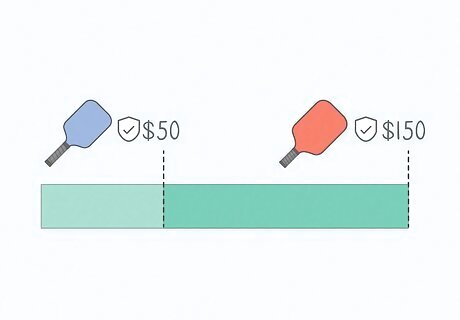
Price and warranty When it comes to pickleball paddles, you have 3 basic ranges, starting with the least expensive paddles, which are under $50. This might be a paddle you'd buy if you're playing pickleball for the first time and aren't sure if you're ever going to play again (or on a regular basis). But once you're hooked on the sport, it's time to level up to a mid-range paddle between $50 and $150. Compare price and warranty carefully. A more expensive paddle with a lifetime warranty could save you money in the long run over a cheaper paddle with a 30-day warranty. If there's a more expensive paddle that you really like, look for discounts or price cuts on one that's blemished or gently used.
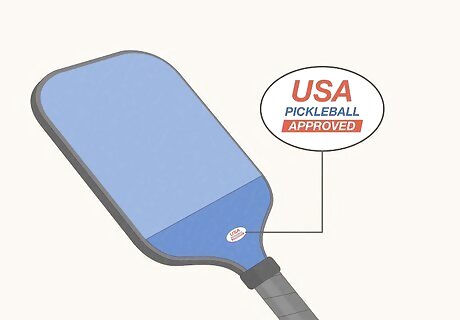
USAPA approval US Pickleball evaluates paddles on the market to determine if they meet certain standards. Knowing the specific standards isn't important for you as a player—just look for a USAPA-approved paddle and you'll know it makes the grade. This is more likely to be an issue if you're looking at cheaper paddles. Most paddles over $50 are USAPA-approved—but it doesn't hurt to double-check and make sure.
Top Paddles for Every Skill Level
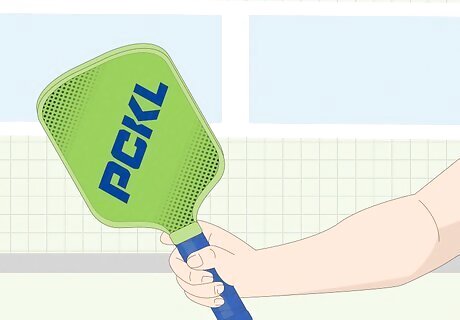
Beginner (1.0 to 3.0 skill rating) You're a beginner if you've just started playing pickleball. You might basically understand the rules of the game, but you're just starting to pick up some basic strategies and techniques and your play isn't consistent. PCKL Launch Series: This is a great budget paddle with a wide body that makes for a nice big sweet spot. If you're just getting started in pickleball and haven't really nailed down your style yet, you can't go wrong with this paddle. Joola Essentials Series: When you're ready to upgrade from the bargain-basement paddle you started out with, you can't go wrong with this paddle. It has a forgiving wide body and comes from a brand all the pickleball pros love. Start playing with this one and you'll feel the difference from your budget paddle immediately. Selkirk Neo: Another paddle from an industry giant, this is a light paddle with a thin grip and a wide face so you get a nice, big sweet spot that's very forgiving. All around, a well-balanced paddle at a good price point for beginners.
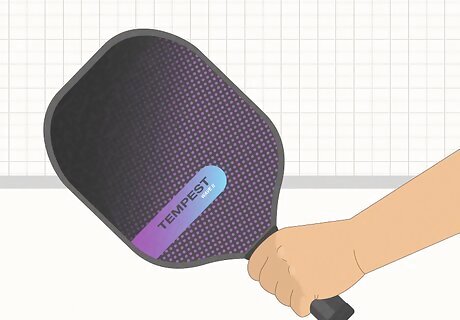
Intermediate (3.5 to 4.0 skill rating) Consider yourself an intermediate player if you've started to develop some consistency and control. You play with some strategy and know how to identify and capitalize on your opponent's weaknesses. Paddletek Tempest Wave II: With a great balance of power and control, this is a good overall paddle to use when you're starting to develop your own style and really take your game to the next level. It's great for strategic players because you'll always be able to put the ball exactly where you want it. Prince Response Pro: When you're ready to upgrade to a pro-level paddle but still prefer a pretty forgiving sweet spot, this is your paddle. Tennis players will recognize the brand and appreciate the tennis racket-like handle. The Spectrum Pro is the same racket with a slightly shorter handle. Ronbus R1.16: This is a solid, all-court paddle with a good-sized sweet spot and a nice balance of power and control. Since it's from a newer brand, it's cheaper than similar paddles by industry giants but still performs just as well.
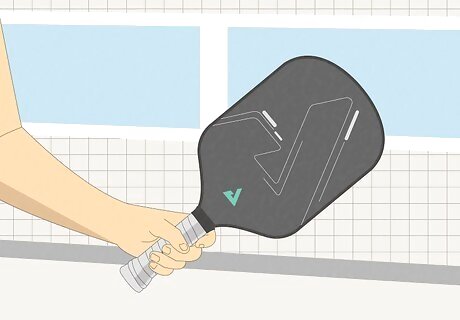
Advanced (4.5+ skill rating) As an advanced player, you've mastered forehand drives, backhand drives, serves, returns, dinks, drop shots, and volleys. You've also mastered strategy, make few if any unforced errors, and know how to attack your opponent's weaknesses. Joola Ben Johns Hyperion CFS 16: This is routinely considered the greatest pickleball paddle of all time—if you're looking for a legendary paddle, this is the one you want. It has a pretty heavy paddle face, but otherwise has a good balance of power and control. Selkirk Vanguard Power Air Invikta: This is a pretty pricey paddle, but if you're an advanced player, you deserve it! With top-of-the-line control and power, you'll be dominating with this paddle. It has less forgiveness and control than the Joola Ben Johns Hyperion CFS 16 but makes up for that with more power. Gearbox GX5 Power: If you've come to pickleball from tennis, this might be your favorite paddle. It's a power-focused paddle for players who already have quick reflexes and a touch with finesse. It's also made out of a solid piece of carbon fiber, which gives it a little extra oomph and a massive sweet spot.















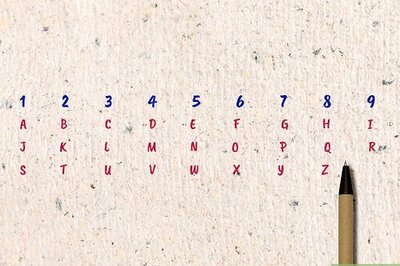
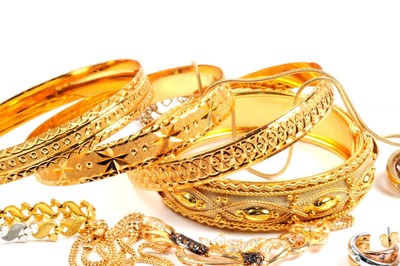



Comments
0 comment